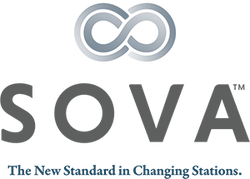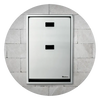Whether you work in a business or coordinate a volunteer organization, community engagement goes far beyond traditional marketing strategies. It’s about fostering genuine connections with the people who live and work in the areas surrounding your organization. One of the most visible ways to engage with your community is by offering accessible restroom facilities for everyone. These facilities not only make it easier for families and those with disabilities to patronize your establishment, but also send a clear message that everyone is valued and respected.
Here are six ways that your organization can provide an inclusive public restroom facility:
- Baby changing stations
- Gender-neutral or family restrooms
- Universal changing tables
- Spacious stalls with hooks
- Regular maintenance
- Community feedback
Universal Changing Tables

Universal changing tables provide safe, hygienic, and dignified access to public restrooms for individuals and their caregivers who may not be able to use standard ADA accessible restrooms. When selecting a universal changing table for your facility, look for a model like the Ascent that offers a user-friendly design for both those with disabilities and their caregivers. By including a height-adjustable universal changing table, you are sending a powerful message of equality and respect, reaffirming the belief that everyone deserves access to public spaces with dignity and independence.
Baby Changing Stations (will include an image of a changing station)
Baby changing stations are a must-have feature in family-friendly establishments. Whether constructed of polyethylene or stainless steel, these changing stations provide a clean and hygienic surface for diaper changes, reducing the risk of contamination in public spaces. Baby changing stations cater to the needs of parents and caregivers, ensuring they can comfortably and safely tend to their little ones. Keep in mind that baby changing stations should be accessible to anybody caring for a child, so changing stations should be installed in women’s restrooms, men’s restrooms, family restrooms, and gender-neutral restrooms.
Gender-Neutral or Family Restrooms
Gender-neutral and family restrooms accommodate families and people of all gender identities, fostering an environment of acceptance and respect. Another benefit of gender-neutral or family restrooms is that they can help alleviate long restroom lines and improve the patron experience during peak hours.
Spacious Stalls with Hooks
While ADA requirements specify the dimensions for accessible restrooms – which are certainly vital to ensuring space for a wheelchair or stroller – hooks on the door are another feature that parents and caregivers will greatly appreciate. The ability to hang a purse, diaper bag, or backpack on the door to free up hands, without having to place items on the floor, goes a long way in showing customers you care about their comfort.
Regular Maintenance
Maintenance routines need to involve more than just checking the stock of toilet paper, seat covers, soap, and paper towels. There should be regular maintenance and inspection schedules to promptly address any accessibility issues, safety concerns, or maintenance issues within restroom facilities, ensuring continued accessibility and functionality for all users. Following a regular cleaning and maintenance schedule will help provide your customers with the experience they are expecting.
Community Feedback
The best way to build a relationship with your community is by listening to what they have to say and acknowledging their feedback. Solicit feedback from community members - including individuals with disabilities, caregivers, and parents - to identify areas for improvement and ensure that restroom facilities meet the diverse needs of the community.
Community engagement isn’t just a buzzword – it's a fundamental aspect of running a successful organization in today’s world. By prioritizing inclusive amenities, organizations can build bridges with the communities they serve, creating environments where everyone feels welcome, valued, and supported. In doing so, they not only strengthen their own bottom line but also contribute to the wellbeing and vitality of the broader community.





